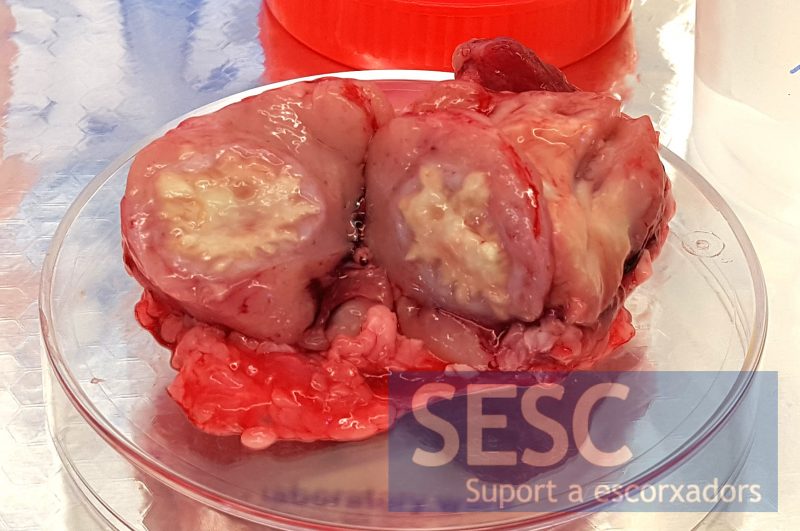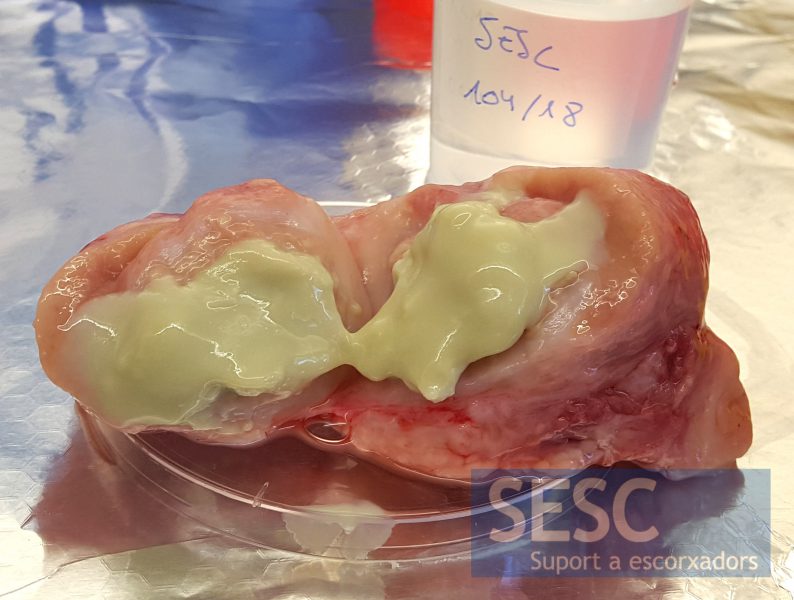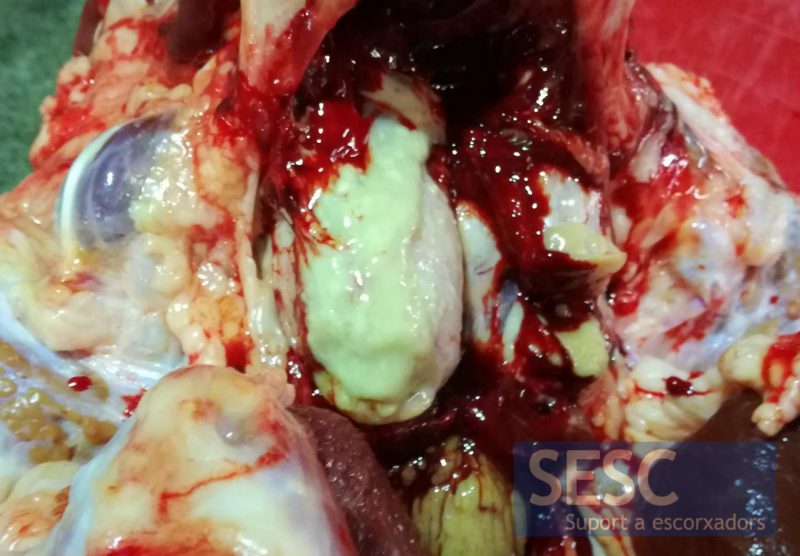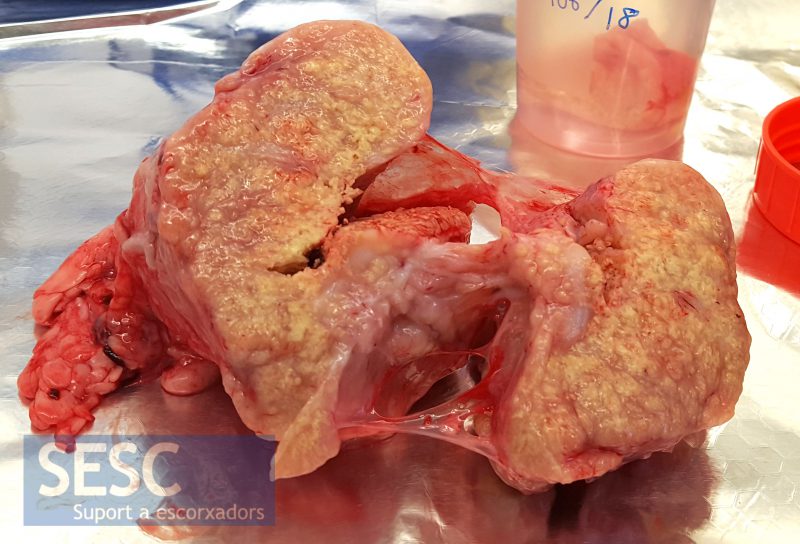The 100 granuloma challenge
As the New Year begins, it is time to make resolutions so that the one coming is better than the previous. From SESC we propose one for 2019: The 100 granuloma challenge!
The challenge is to try to submit a minimum of 100 granulomatous lesions observed in the slaughterhouse in bovine carcasses to investigate bovine tuberculosis during year 2019.
Where does this number come from?
In Catalonia, roughly 500.000 bovines are slaughtered every year.
MAPA has set a non-tuberculous granulomas remission rate of 0.1 (x1000), which means that every year up to 50 non-tuberculous granulomas should be investigated.
The average confirmation rate of tuberculosis suspicions of the last 10 years of SESC is 50%.
Therefore, if during the next year we analyze 100 granulomas we would certainly achieve this objective. It is clear that the increased number of granulomas investigated will significantly lower the percentage of samples confirmed as tuberculosis, especially now that we have a very low herd TB prevalence (below 0.3%). But as a counterpoint, slaughterhouse surveillance will be consolidated as an effective tool for tuberculosis control.
Which lesions should be submitted?
Any granulomatous lesion, nodular or not, with necrosis, caseum or mineralization may be compatible with tuberculosis. Especially if located in lymph nodes or the pulmonary parenchyma. But without forgetting that tuberculosis can affect any organ and that when disseminated by blood it can give pearl lesions on serous membranes.
The objective is to be able to declare Catalonia as an officially tuberculosis-free region (OTF), which is why the TB herd prevalence must remain below 0.1% for 6 consecutive years. For a few years we have been close to this milestone, a situation in which we could consider stopping herd testing and in which slaughterhouse surveillance would become the only control measure.
Since 2012, 21% of the new TB outbreaks detected in Catalonia have been through slaughterhouse surveillance. But the number of unconfirmed suspicions is rather low and irregular over the years, thus it is necessary to encourage the submission of granulomas.
| Year | TB suspected cases | TB confirmed | Non-TB | Nº culled bovines | Non-tuberculous granuloma submission rate (x1000) |
| 2009 | 54 | 37 | 17 | 473824 | 0,04 |
| 2010 | 42 | 29 | 13 | 480685 | 0,03 |
| 2011 | 24 | 11 | 13 | 477388 | 0,03 |
| 2012 | 18 | 8 | 10 | 477549 | 0,02 |
| 2013 | 15 | 9 | 6 | 479812 | 0,01 |
| 2014 | 32 | 16 | 16 | 466705 | 0,03 |
| 2015 | 36 | 15 | 21 | 499169 | 0,04 |
| 2016 | 19 | 9 | 10 | 525512 | 0,02 |
| 2017 | 22 | 6 | 16 | 517.120 | 0,03 |
Tabe 1: Number TB suspected cases received at SESC in recent years. As you can see, we must make an important effort to achieve the 100 granuloma challenge.
Achieving this challenge will help eradicate bovine tuberculosis, but it is not the only thing we can do from SESC: special emphasis is placed on the analysis of granulomas from other TB reservoirs as well: small ruminants (goat and sheep) and, in game meat processing facilities, wildlife (especially wild boar).
In this link you can review all the blog entries related to the diagnosis of tuberculosis in slaughterhouses in which there are numerous examples of tuberculous lesions images.
Below we show pictures of the latest suspected TB cases submitted to SESC.
Have a happy 2019!

Retropharyngeal lymph node of an eleven-month-old calf of Fleckvieh breed with a necrotic-caseous lesion. Microscopically, the lesions were compatible with tuberculosis.

Retropharyngeal lymph node of an 11-month calf of Friesian breed. Although it is an apparently suppurative lesion, it could be compatible with tuberculosis. Microscopically, the lesions were compatible with suppurative lymphadenitis of bacterial origin (colonies compatible with E.coli and T.pyogenes were isolated).

Retropharyngeal lymph node of an 11-month calf of Normanda breed. It also presents a lesion of suppurative appearance, but histologically a granulomatous component could be observed, with multinucleated giant cells, compatible with Tuberculosis.

Retropharyngeal lymph node of a 12-month calf of Limousine race. Granulomatous, mineralized lesion, also compatible with tuberculosis in the microscope, was observed.

